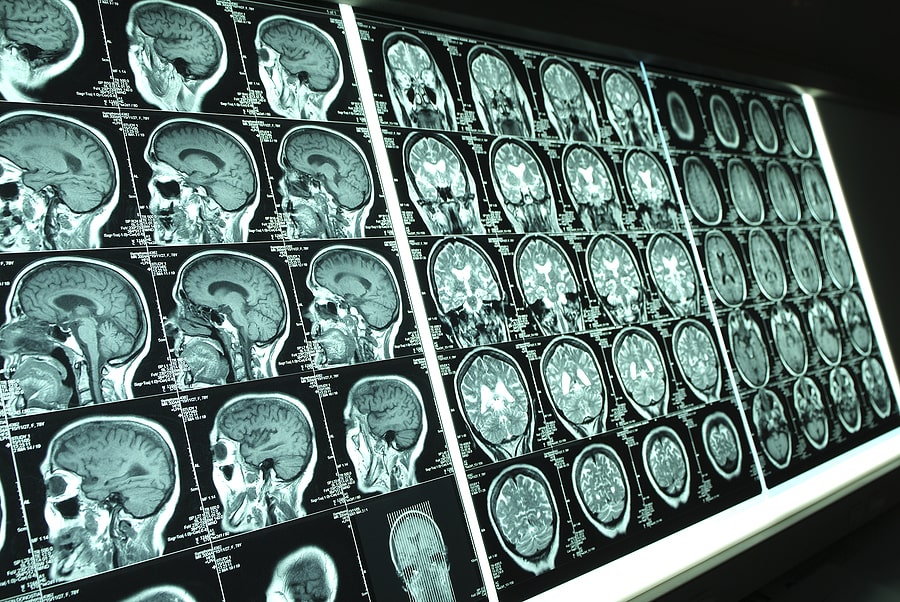
As the body’s control center, the brain works constantly. From producing dreams to signaling hunger, the brain function requires a continuous oxygen supply. It only takes four minutes without oxygen for the brain to start dying. Acquired traumatic brain injuries occur when outside forces, such as strangulation, or medical conditions, such as heart attacks, prevent oxygenated blood from reaching the brain.
Car crashes, drowning, assaults, and birth mistakes often cause oxygen deprivation injuries. Personal injury attorneys might help patients and their families recover needed compensation in many such cases if another’s negligent conduct resulted in brain trauma.
What Are Anoxic Brain Injuries?
Anoxic and hypoxic brain injuries refer to a variety of brain conditions caused by prolonged oxygen deprivation. Though hypoxic and anoxic brain traumas share common causes, they differ. Hypoxic brain injuries refer to brain trauma caused by partial oxygen deprivation and reduced blood flow. Examples include oxygen reduction due to underlying lung diseases, anemia, low blood pressure, and partial strangulation. Anoxic brain trauma refers to brain injuries caused by a complete lack of oxygen.
Anoxic brain injuries often result from:
- Drowning
- Major heart attacks
- Carbon monoxide poisoning
- Stokes
- Drug overdoses
- Electrocution
- Choking
- Strangulation
Hypoxic brain injuries may develop into anoxic injuries if left untreated. Minor cardiac arrhythmias, for example, may reduce blood flow to the brain before triggering heart attacks. After car accidents or surgical mistakes, blood loss might also go from reducing to stopping the brain’s oxygen supply.
Leading Causes of Traumatic Anoxic Brain Injuries
Traumatically acquired brain injuries refer to conditions arising from an outside force. Unlike many hypoxic brain injuries, complete oxygen deprivation often stems from sudden physical harm. Anoxic brain trauma most often occurs when one of the following events prevents brain oxygenation.
Motor Vehicle Accidents
Many serious car crashes result in chest crushing injuries, including punctured lungs and cardiac arrest. Pedestrians and cyclists may suffer from these devastating conditions after being run over by negligent drivers. Severe chest trauma often results in suffocation, brain damage, and even death due to anoxic brain trauma.
Likewise, motor vehicle occupants may suffer from sudden blood loss due to penetrating injuries or suffocate after airbag deployment. Small children should not sit in the front seat due to the prevalence of trauma and suffocation associated with airbags. Many traumatic brain injuries stem from high-speed car crashes and pedestrian accidents.
Electrocution and Falls
Contractors and other construction professionals frequently risk falling off ladders and being struck by workplace debris. These accidents may result in traumatic brain injuries, including brain bleeding and swelling. This swelling often puts pressure on the brain resulting in blood vessel compression and anoxic brain damage.
High-voltage electrocutions from live wires or poorly managed circuits may also stop the heart and impact the brain’s oxygen supply. Without CPR or defibrillators, electrocution often results in anoxic brain injuries and death.
Anesthesia Mistakes
The medication administered to patients during surgical procedures generally requires intubation because of its potency. Administering too much anesthesia may result in immediate brain death due to oxygen loss, while administering too little anesthesia may result in cardiac arrest during the procedure. Issues with oxygenation during surgery might cause anoxic brain damage.
Domestic Assault
Domestic abuse, including physical violence and sexual assault, may result in acquired traumatic brain injuries. Abusive caretakers have seriously harmed children by suffocating them with pillows or strangling them during emotional outbursts. Likewise, abusive partners may strangle and suffocate victims during physical and sexual assaults. Many domestic abuse victims, including children, died or suffered from disabilities due to anoxic brain trauma.
Gestation, Labor, and Delivery Errors
Developing brains need oxygen-rich blood to grow and survive. During gestation, fetuses receive their oxygen supply via the umbilical cord. Umbilical cord compression and damage may lead to hypoxic or anoxic brain injuries. Many such injuries occur during the critical third trimester as the child and umbilical cord shift during labor.
The following types of umbilical cord conditions may lead to anoxic brain injuries if left untreated:
- Overcoiling and knotting – Umbilical cord knots and twists occur when the child’s movements cause the cord to overlap itself, potentially cutting off the infant’s blood supply. Tight knots and coils may compress the cord’s blood vessels, causing oxygen deprivation and developmental brain damage.
- Nuchal (neck) cord – Nuchal cords occur when the cord wraps around the child’s neck during late-stage pregnancy and delivery. Doctors can commonly untangle the cord during delivery. However, tightly wrapped nuchal cords may suffocate the child while compressing the fetus’s oxygenated blood supply. Doctors should recognize signs of fetal distress immediately and, if necessary, perform an emergency C-section to prevent further cord compression during the birthing process. Failure to do so often results in anoxic brain injuries or stillbirths.
- Compression – This condition commonly occurs when the umbilical cord gets pinched in the womb (crushed between the fetus and vaginal wall). This pressure can cut off the child’s oxygen supply. Still, doctors can generally correct this condition with saline injections, or if necessary, perform a C-section before brain injuries occur. Increasing the mother’s oxygen supply before labor can also offset any compression-related oxygen loss.
- Prolapse – Umbilical cord prolapse occurs when the cord slips into the birthing canal, and the child compresses the cord during delivery. This tight compression typically results in complete oxygen deprivation and potential anoxic brain injuries. Doctors and nurses can prevent prolapse by checking for slipped cords, repositioning the mother, or performing a C-section. Failing to check for and correct umbilical cord prolapse may result in anoxic brain injuries and medical negligence claims.
Fetal heart rates typically spike when children fail to receive sufficient oxygen, alerting doctors and nurses of potential anoxic brain trauma. Medical staff must quickly relieve pressure on the umbilical cord in such cases. Anoxic injuries caused by healthcare negligence may give rise to medical malpractice litigation.
Cognitive Conditions Associated With Anoxic Brain Damage
The symptoms and disabilities caused by anoxic brain injuries depend on the patient’s age and extent of oxygen deprivation. The longer the brain goes without sufficient oxygen, the more brain cells die in the process. Most anoxic brain injuries result in cerebral damage (cell death in the brain’s frontal, parietal, occipital, and temporal lobes). Long-term conditions frequently associated with anoxic brain injuries include:
Cerebral Palsy (CP)
Cerebral Palsy is a motor disability often caused by oxygen loss during the birthing process. This permanent disability generally results in difficulty balancing, walking, speaking, standing, or engaging in complex movements. Children diagnosed with CP often require extensive physical and cognitive rehabilitation. They might also need expensive medical equipment to help them walk, private tutors, and home nursing care.
Blindness and Visual Impairment
Cell death in the occipital lobe may result in permanent blindness or vision difficulties. While the eyes remain unaffected, the brain loses the ability to process and convert images. Anoxic brain trauma may result in occipital lobe damage directly or due to strokes caused by oxygen loss. Doctors and parents should monitor children suffering from CP and related birth trauma for signs of vision difficulties.
Mood and Focus Disorders
Depression, anxiety, inappropriate behavior, and mood swings might develop after anoxic brain trauma. These may accompany more subtle cognitive symptoms such as disorienting behavior, lack of focus, reduced attention span, confusion, insomnia, and forgetfulness. Damage to the frontal lobe (the brain’s largest area) often manifests with these conditions and personality changes. It’s easier to spot these changes in adults but difficult to diagnose in children. Common childhood syndromes such as attention deficit hyperactivity disorder (ADHD) might develop due to anoxic brain injuries sustained during birth.
Coma, Vegetative States, and Brain Death
Prolonged periods of complete oxygen deprivation generally result in irreversible brain damage or brain death. Brain death occurs when all brain cells, including the brain stem, cease functioning. When the brain damage is severe but does not cause brain death, patients may enter a vegetative state. Patients in this state lose higher forms of brain function, such as speaking and awareness, but maintain certain life-sustaining functions. A coma may precede both brain death and vegetative states after severe anoxic brain injuries. However, this prolonged state of unconsciousness might also help patients suffering from life-altering head trauma to recover.
Diagnosing and Treating Anoxic Brain Injuries in Children
Despite medical advances, childbirth remains a physically traumatic experience for mothers and children. Delivering infants without advanced medical care or giving birth to multiples increases the likelihood of children suffering from anoxic brain injuries. Further, the lack of quality medical care may result in poor fetal brain development due to treatable conditions.
Mothers who experienced traumatic labors underwent emergency C-sections, or otherwise question the quality of their prenatal care should monitor their children for signs of anoxic brain trauma.
Signs of birthing trauma may include:
- Vision difficulties, including rapid blinking, squinting, and lack of eye focus
- Lack of cognitive awareness
- Extreme developmental delays, including failure to communicate
- Inability to focus
- Seizures
- Lack of fine motor skills
- Emotional disorders and age-inappropriate behaviors
Parents should consult with early childhood experts and, if necessary, pediatric neurologists to discuss their concerns. While many of the above symptoms naturally occur during development, they might indicate anoxic brain trauma when coupled with traumatic birth experiences. Doctors might recommend placing children in cognitive or physical therapy to improve motor skills and brain development. They might also suggest medications to help prevent dangerous seizures and emotional instability.
Some children need specialized medical equipment and private nursing care after suffering from serious anoxic brain injuries. Parents want the best for their children but may worry about the expensive medical, therapeutic, and educational costs associated with brain trauma. Birth injury lawyers may help parents file medical malpractice litigation on their child’s behalf to recover payment for these expenses.
Recovering Compensation for Birth-Related Brain Trauma
While umbilical cord conditions develop in almost half of all pregnancies, competent healthcare professionals can generally identify and correct these issues with ease. Further, fetal monitoring typically warns doctors when children are in distress from oxygen loss and require immediate delivery. As such, many birth-related anoxic brain injuries arise from medical neglect. Parents might work with local lawyers to demand financial compensation from medical malpractice insurers and healthcare professionals in such cases.
Hospitals, birthing centers, and individual medical practitioners might all share liability for anoxic brain trauma.
Malpractice claims may include demands to cover:
- Additional hospital bills and costs
- Specialized cognitive rehabilitation
- Doctors bills
- Physical therapy
- Speech therapy
- Special education tutors
- Nursing care
- Medical equipment and household modifications
- Medications
- Mental health and behavioral counseling
- Parental lost wages due to caretaker responsibilities
- The child’s physical pain and emotional anguish
Parents cannot generally demand compensation for their child’s potential lost wages and career opportunities due to their highly speculative nature. However, guardians may claim damages for their children’s anticipated future medical and therapeutic expenses. Birth injury attorneys frequently work with pediatric and economic experts to develop these settlement demands based on the child’s prognosis and available medical therapies.
Timeframe for Demanding Damages After Childhood Anoxic Brain Injuries
Many children do not display signs of anoxic brain trauma during infancy. Many symptoms of brain injuries imitate normal issues arising as children develop. It may take years for parents to notice certain development delays and link those delays to potential birth trauma.
As such, normal medical malpractice litigation time limits do not typically apply in childhood brain injury cases. Many states give parents a few years to file medical neglect litigation after discovering the medical condition and consulting with developmental experts.
Some states even stop the statute of limitations completely until the child turns 18, giving parents and experts the chance to understand the child’s prognosis and future needs. Local birth injury lawyers may help potential claimants understand their legal rights following anoxic brain trauma.
Consider a free childhood medical malpractice consultation with legal counsel to discuss the timeframe for filing litigation in such cases. Personal injury attorneys typically provide free case reviews and may even accept cases with no upfront fees or costs. While traumatic brain injury settlements cannot cure your child, they may give kids suffering from anoxic brain trauma access to the best treatments and therapies available.














